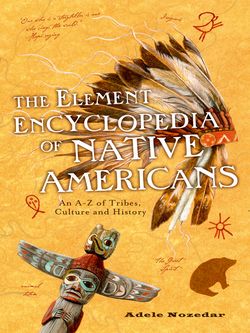Читать книгу The Element Encyclopedia of Native Americans: An A to Z of Tribes, Culture, and History - Adele Nozedar - Страница 67
BOW
ОглавлениеAny kind of springy, whippy wood—hickory, cedar, mulberry, white ash, or dogwood—could be used to make a bow; so, too could horn or bone. Bows were made in many different sizes and shapes, to suit the user. His bow was a precious tool to any Native American, and he continued to carry it even after the coming of guns.
There were different types of bow, too. The simplest was called the “self bow,” made from one piece of wood and strengthened with sinew glued and lashed along its length. Then there was the “compound bow” made from layers of materials such as wood, bone, and horn, glued and lashed together with sinews. There was a bow whose wooden part was entirely wrapped in sinew. The Eskimo actually made bows from the rib bones of whales.
In the same way that different tribes preferred different types of arrows, they also preferred different styles of bow. For example, the Plains Indians preferred a shorter bow since they would be likely to use it when on horseback. The Apache bow had its tips curved back, like the typical “Cupid’s bow.” The Pueblo made miniature bows, painted them, and buried them with their dead.
The bowstring itself, which pulled back the arrow to make it fly, was generally made from twisted vegetable fibers, rawhide, and sinew. It was important that the bowstring had “bounce” and elasticity combined with toughness; bear guts or other animal guts were ideal for this purpose, since this material had the necessary qualities. One end of the bow string was affixed to the wooden part of the bow permanently, while the other was loose when not in use, attached only to a notch in the bow when the weapon was about to be used. This meant that the bowstring itself lasted longer and wasn’t overstretched.
The Native American, no matter his tribe, was incredibly skilled with his bow and arrow, and legendarily could fire off half a dozen arrows in the time it took the white man to load one bullet into the early single-shooter guns.
